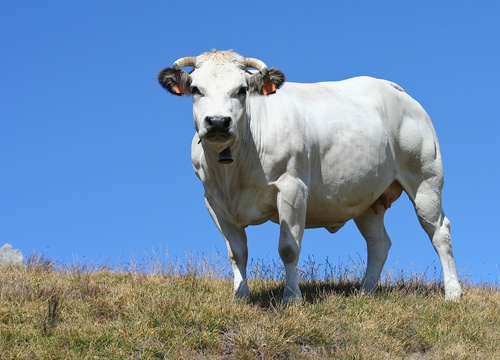Keeping a tradition alive: the Carrù Fat Ox Fair

The fair is a story that never wants to end. It is the means by which tradition stays alive and does not become just a memory.
We are in Carrù, a small town in the province of Cuneo, at the beginning of the Langa. This town is famous throughout the region and beyond for a fair that has its origins going all the way back to the Middle Ages: that of the Fat Ox.
It is thanks to a decree by Jolanda of France, guardian of the Duke of Savoy Filiberto I, that we know of a twice-weekly cattle market as far back as 1473, right where Carrù now stands.
stands Carrù. In 1635, Duke Vittorio Amedeo I issued a decree granting the community the right to hold an annual fair lasting three days. Today's fair of the Bue
of Carrù was born, however, on 15 December 1910. Even today, 112 years later, it is commemorated on the same day every year.
The gastronomic excellence commemorated during this event is the fattened ox: a very high quality product, not very well known outside our region.
We are talking about native Piedmontese cattle, a breed whose meat is famous throughout the world. Castration of the male bovine, by the age of eight months, will favour weight gain of the animal. By the fourth year of age, the bovine can be defined as a fat ox and can weigh a good one tonne. The quality of the meat can be seen in the large amount of fat, which is synonymous with an unusual tenderness and an unmistakable, enveloping taste.
There are many preparations, both raw and cooked, that make the most of ox meat, but the most iconic dish is, without doubt, bollito misto alla piemontese. The 'rule of
seven' governs the recipe for this dish, made with seven cuts of fatty ox: the scaramella, the brisket, the brutto e buono, the stinco, the muscolo, the cappello del prete and the reale con l'osso. There are also seven accompaniments to the fatty ox, cooked separately: pig's trotter, head, chicken, tail, cotechino, rolata and tongue.
Very important are the sauces, which are intended to enrich the taste of the boiled meat and make it more enveloping to the palate. By far the most famous and widely used is the green sauce, made with parsley, which also accompanies other famous Piedmontese recipes such as anchovies in green sauce or tongue with green sauce, as well as tomini.
The 112th edition of the national Fat Beef Fair will be held in Carrù, at the boarium in Piazza Mercato.
One of the most eagerly awaited events, as every year, is the zootechnical exhibition: a real beauty competition, in which each breeder presents one of his head of oxfat to the public and a trained jury. The prizes are coveted and prestigious. First and foremost is the famous caparison, which depicts the head of an ox.
Another important event is the ox auction, which has been part of the fair since 2006. The auction is reserved for oxen of the Piedmont breed and is an interesting attraction for the
public. It is conducted in the traditional manner, with the official auctioneer receiving the various bids, but in recent years it has also been possible to participate online. Whoever wins each
head of cattle is presented with a prestigious customised caparison.
Last but not least, the awarding of the coveted Golden Ox: an award established in 2000, given to figures from the world of sport, culture or politics
who have distinguished themselves for their respective activities. Over the years we have seen important Italian personalities take home this award, such as the founding president of Slow Food Carlo Petrini, the chef and TV presenter Alessandro Borghese and the priest and president of the Libera association Don Luigi Ciotti.
Who will be awarded this year?
Participating in one of these events is an important way of supporting important associations that work hard every day to enhance the territory and
gastronomic and other excellence.
At a fair, one breathes an air of festivity and joy, but above all of history and tradition. The Fair of the Fat Ox is just one of many examples of historical re-enactments that attempt to keep alive
a product, a custom, a scent or a taste.
Let's make this happen...